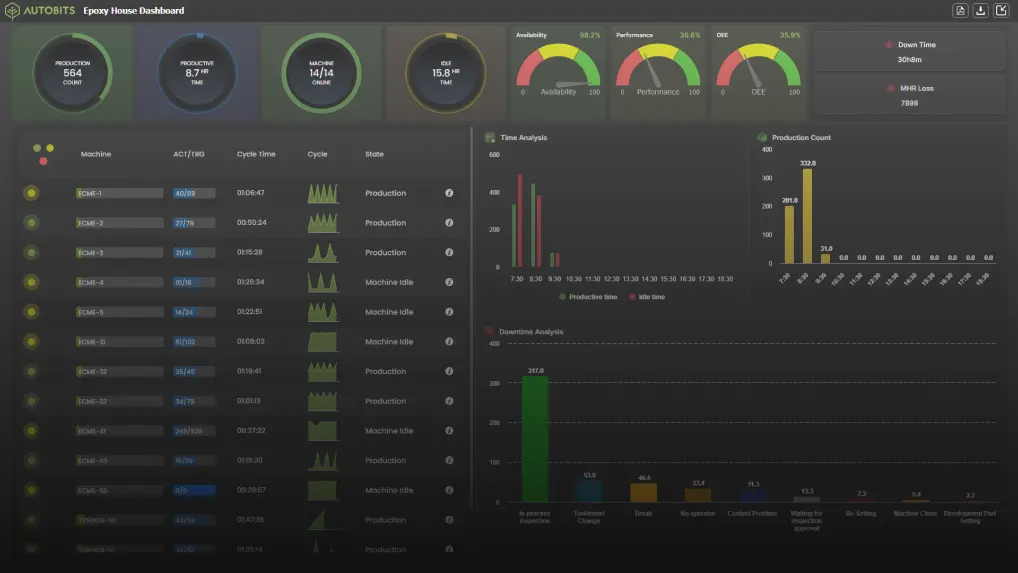There are innumerous factors that affect the OEE performance of the company. The main factor in OEE is downtime in manufacturing process. Downtime is defined as the time when a process was intended to execute but did not. This includes unloading / loading of parts, inspection, setup changes, breakdowns, etc. OEE is not just a number for any organization, but it’s a mirror for decision taker to improve and evaluate the performance of the shop floor. It’s not a number that you achieve and sit, relax, but it’s a number that you constantly strive to improve.
Multiple organizations consider unloading / loading, inspection, tool change, setup change downtime as a part of the process but not as downtime. This contradicts the logic about using OEE. It inflates the OEE figure artificially, yet it is worthless.
Availability = Run time divided by Planned Productive Time
Run time = Planned Productive Time minus Downtime
Here’s why you should treat ALL downtimes as downtimes
One can get an artificially high availability of 95% by excluding certain downtime and increasing the numerator in the availability calculation. As a result, one fails to root for a scope of improvement and ends up sitting back and relaxing.
Assume that the setup time for a CNC lathe component is 2 hours. If I don’t consider this as a downtime, this setup time will remain constant for years. If I consider it as a downtime, I will continue trying to decrease it by using quick change tooling, automatic tool pre setter, etc. and similar practice with other downtimes.
There are so many formulas available for calculation of availability (A), performance (P), quality (Q) and OEE. The OEE formula is differ from organization to organization as per their process.
Action point:
Rather than creating an artificially high OEE number, patting ourselves on the back, and sitting around complacently, we must obtain genuine OEE figures and work to increase it.





